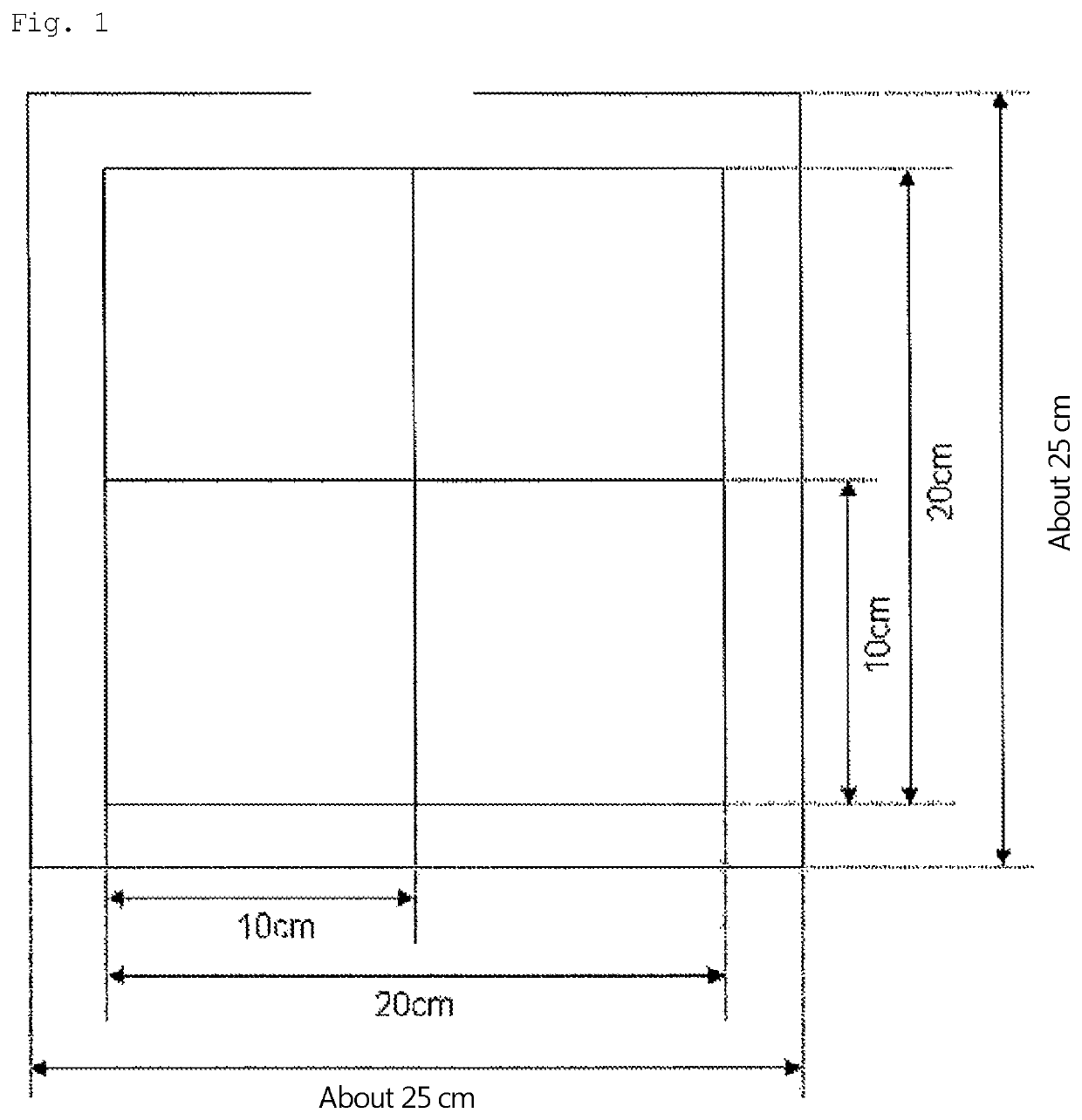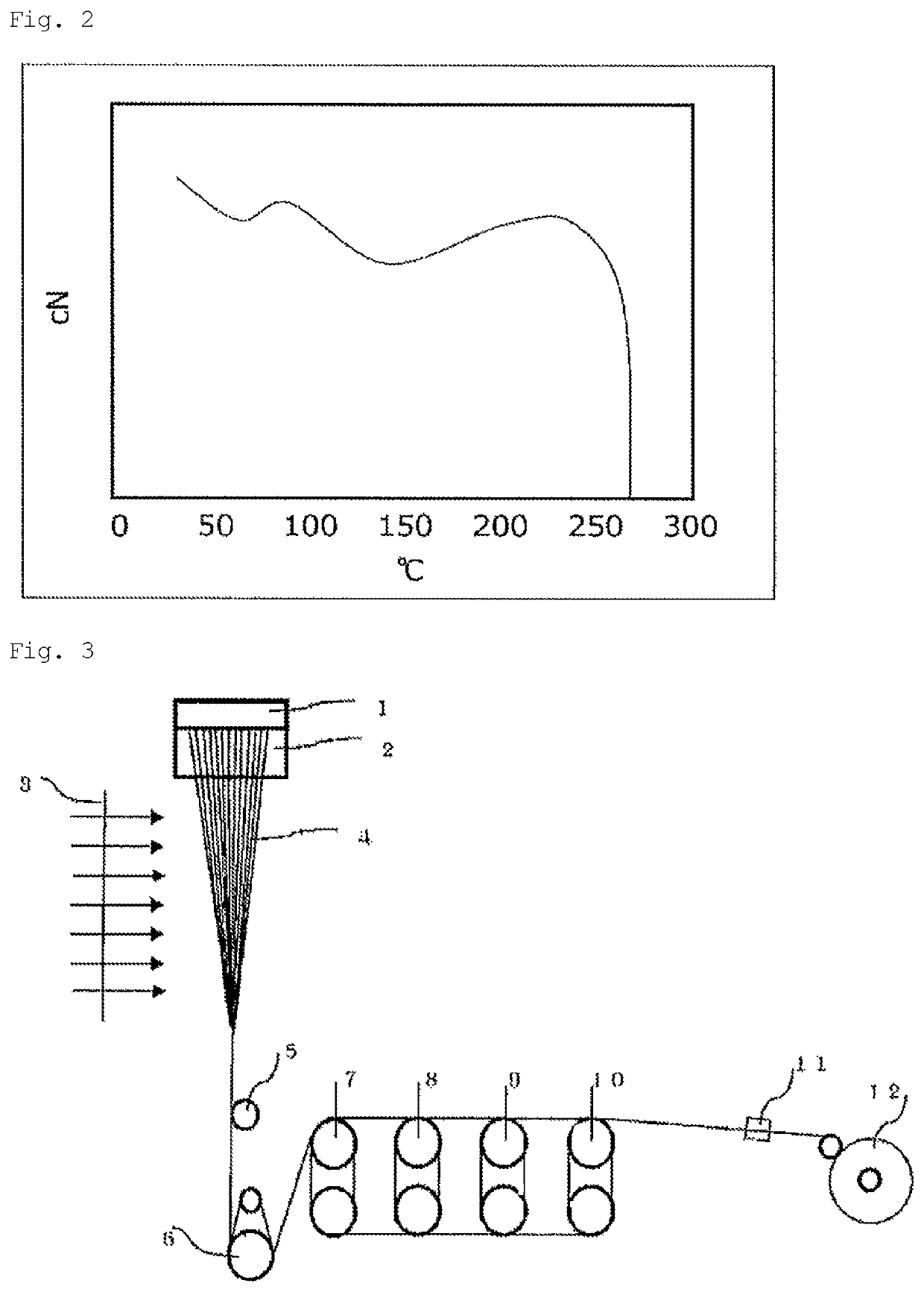Fabric for airbag, coated fabric for airbag, and airbag using same
a technology for airbags and fabrics, applied in the direction of pedestrian/occupant safety arrangements, vehicular safety arrangements, physical treatment, etc., can solve the problems of increasing damage per multifilament yarn, reducing the tensile strength of airbag fabric, and pyro-type inflators tend to significantly damage the fabric used for airbags, etc., to achieve stable airbag deployment and mitigate seam damage
- Summary
- Abstract
- Description
- Claims
- Application Information
AI Technical Summary
Benefits of technology
Problems solved by technology
Method used
Image
Examples
example 1
[0123]A nylon 66 polymer in the form of pellets having a relative viscosity RV to sulfonic acid of 3.2 was melted at a temperature of 300° C. using an extruder, then spun using the production equipment shown in FIG. 3. After the molten polymer was homogenized to a temperature of 295° C. using a spin head, the resulting polymer was metered with a gear pump in such a manner that the yarn after winding had a total fineness of 235 dtex; and was spun through a spinneret pack. The spun yarn passed through a 300 mm heat-retention cylinder whose atmospheric temperature was controlled at 260° C., and was solidified by cooling with quenching air whose velocity distribution was controlled at 6% to form yarn at a nozzle draft ratio of 150. After an oil agent was applied to the solidified yarn by a known method, the yarn was taken up by a feed roller without being wound once. The obtained yarn was subjected to cold-drawing at 50° C. and hot-drawing at 180° C., at a cold / hot draw ratio of 2.0. Th...
example 2
[0126]An original yarn was produced under the same conditions as in Example 1, except that the total fineness to be achieved was changed to 270 dtex, and the cold / hot draw ratio was adjusted to 2.2. Table 1 shows physical properties of the obtained original yarn.
[0127]A plain-weave fabric with a weave density of 69 yarns / 2.54 cm for the warp and weft was obtained in the same manner as in Example 1, except that the obtained 270 dtex nylon 66 yarn was used for the warp and weft, the on-machine density was set to 64 yarns / 2.54 cm for both the warp and weft, and the average warp tension was set to 0.23 cN / dtex. Table 2 shows the operational information, physical properties, and appearance quality of the obtained fabric.
[0128]The obtained fabric had few weft insertion errors, excellent loom operation efficiency, and good appearance quality as a final product. Further, the fabric was lightweight and compact, but had sufficient strength characteristics and a high average edgecomb resistanc...
example 3
[0129]A plain fabric was obtained in the same manner as in Example 2, except the average warp tension was adjusted to 0.23 cN / dtex and the loom rotation speed was set to 900 rpm. Table 2 shows the operational information, physical properties, and appearance quality of the obtained fabric.
[0130]The obtained fabric had acceptable levels of operation efficiency and appearance quality as a final product. Further, the fabric was lightweight and compact, but had sufficient strength characteristics and a high average edgecomb resistance retention in the warp and weft directions after heating; and was thus a fabric less susceptible to damage to seams. An airbag fabric with low residual shrinkage and ensured long-term dimensional and physical property stability was thus obtained.
PUM
| Property | Measurement | Unit |
|---|---|---|
| residual shrinkage | aaaaa | aaaaa |
| residual shrinkage | aaaaa | aaaaa |
| thickness | aaaaa | aaaaa |
Abstract
Description
Claims
Application Information
 Login to View More
Login to View More - R&D
- Intellectual Property
- Life Sciences
- Materials
- Tech Scout
- Unparalleled Data Quality
- Higher Quality Content
- 60% Fewer Hallucinations
Browse by: Latest US Patents, China's latest patents, Technical Efficacy Thesaurus, Application Domain, Technology Topic, Popular Technical Reports.
© 2025 PatSnap. All rights reserved.Legal|Privacy policy|Modern Slavery Act Transparency Statement|Sitemap|About US| Contact US: help@patsnap.com


